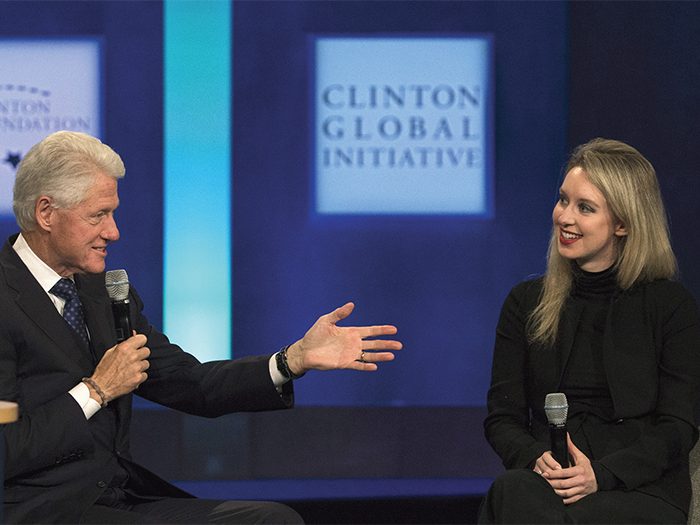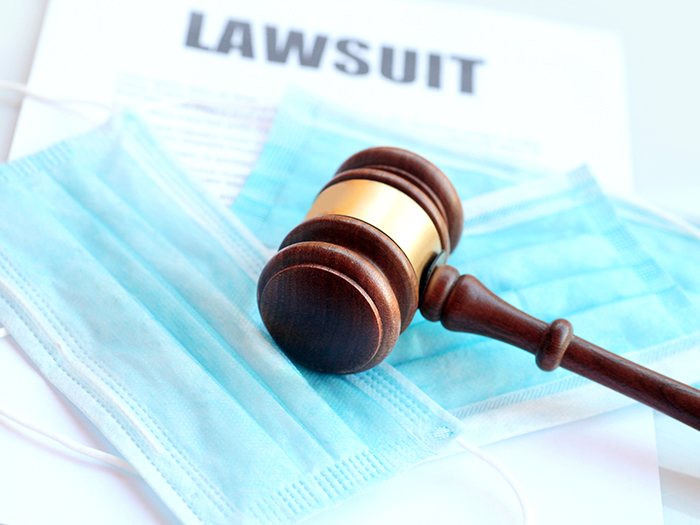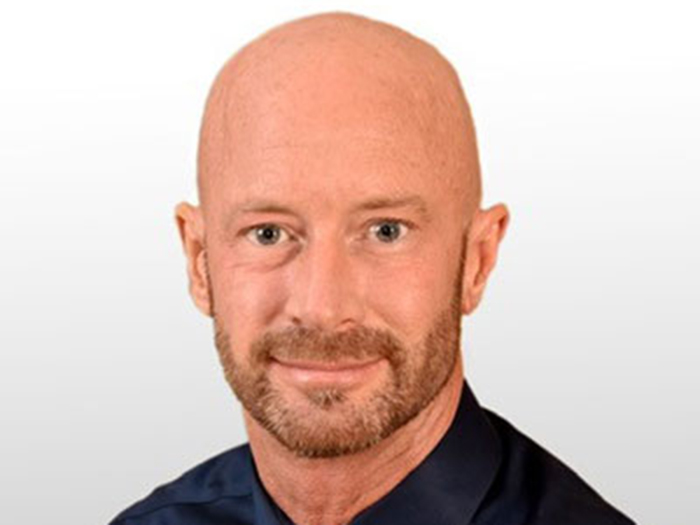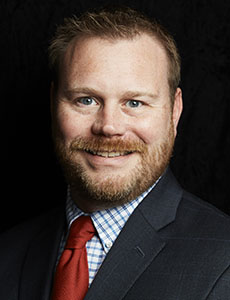An Entire Industry Was Duped By a Well-Spoken, Well-Dressed Silicon-Valley Tycoon; Here’s Why It’ll Happen Again

We wanted to believe. A Stanford dropout created a world-changing product — a portable blood analyzer that ran nearly 200 vital tests using just a few drops from a finger prick.
We would soon test blood at home or at the local pharmacy. Results would come in minutes not weeks. People could monitor their own health and get warning signs for deadly diseases far earlier. No longer would we say goodbye to loved ones too soon. All thanks to Theranos.
The press and public ate it up. Theranos founder Elizabeth Holmes graced the cover of magazine after magazine dressed in “Steve Jobs black” — her blue eyes piercing through the page. She conquered the notoriously male-dominated Silicon Valley, and Theranos climbed to a whopping $9 billion valuation and had $900 million in investment capital.
We wanted to believe. But we were duped.
In the end, Theranos failed miserably after years of fraud, deception and outright lies. The technology could only perform a handful of tests, executives ignored erratic results and buggy technology, and finger pricks didn’t produce nearly enough blood for accurate testing, according to Bad Blood: Secrets and Lies in a Silicon Valley Startup by John Carreyrou.
Inside Theranos, employees who raised concerns were marginalized or fired, while blind loyalty was rewarded. Its blue-blood board of directors treated Holmes like Silicon Valley royalty — and failed to look under the hood. It’s one thing to fudge the technological capabilities of a consumer product. It’s quite another to offer medical test results you know to be inaccurate.
The company even falsely claimed that the Department of Defense was using Theranos equipment in Afghanistan.
By 2018, Holmes and Theranos President Ramesh “Sunny” Balwani were indicted for running an elaborate, years-long fraud. Meanwhile, lawsuits piled up from all angles and regulators found major inaccuracies in the patient testing. Holmes and Balwani both eventually stepped down from the company. Once the world’s youngest female billionaire, Holmes could soon face criminal charges.
Much has been written about Theranos, but the risk management and business insurance implications haven’t been explored much. The lessons are clear: Always be skeptical, do your due diligence and be prepared — because this will happen again.
An Underwriting Nightmare
Theranos represents a nightmare scenario for underwriters. From the outside, the company looked rock solid. Its board of directors included former Secretaries of State George Schultz and Henry Kissinger. Holmes was touted as a genius and even spoke on a panel with President Bill Clinton.
Meanwhile, the company ran all but a small fraction of its tests on conventional machines, fudged results and had nowhere near the capability it claimed. Despite the outward appearance, an underwriter’s job is to be cynical and ask tough questions.
“There was a lot of packaging around the story and people thought they recognized the pattern of Facebook or Apple because of the narrative Holmes built,” said Kevin LaCroix, executive vice president of RT Specialty.
“I think there’s a lesson for everybody — D&O underwriters, investors and buyers of the product. You have to be skeptical, especially when there’s a lot of hype.”
A curious underwriter could have found that not a single venture capital firm with expertise in health care invested in Theranos, and that no board member had even basic knowledge of blood science.
Theranos was also stingy with stats showing that its technology actually worked — which should have made underwriters suspicious, said Kevin Dean, chief underwriting officer, liability products for IronHealth at Ironshore Insurance.
“We would never take the word of a startup if they couldn’t provide us with external testing data,” said Dean. “It’s not a low-impact device. Medical decisions will be based on the test results, so it’s crucial to know it works as advertised.”
A major red flag was that Holmes controlled all board voting.
“That’s D&O 101. That’s a problem,” said Peter R. Taffae, managing director of Executive Perils. “I’m not telling you that you can’t underwrite it or every single company that has a CEO who owns that much stock gets declined, but there were no checks and balances.”
Still, can you really put all the blame on underwriters? Try explaining to your boss that you turned down the next Apple.
“I can understand how saying ‘no’ to such a big account can be tough to explain up the chain of command,” said Dean, “but there really needs to be recognition that a premium is so large because there’s a real risk associated with it.”
Taffae isn’t as forgiving.
“Greed is the common denominator in all of this,” said Taffae. “I’m talking about the insurance underwriters, investment community, investment bankers, etc. When underwriters see a six-digit premium, they sometimes have greed, too. They want to believe in the account because if they bind it, it’ll be a big victory.”
There are medical malpractice implications as well. Such a policy would guard against false positives that could lead a patient to have an unnecessary medical procedure.
It would also guard against a false negative, which could lead a patient to let a serious condition go undiagnosed. Product liability coverage also comes into play — guarding against errors or malfunctions in the device design.
But what happens when company leaders know that test results are inaccurate and the equipment was sure to malfunction? Would the insurers even be on the hook for any damages?
“There seems to be a level of intentional wrongdoing here,” said Dean. “Their lab techs allegedly knew they were giving out bad results, so there’s a big question about whether the coverage would be responsive in this situation.”
Regulators Duped
How could regulators have missed such blatant fraud for so long? When you’re the darling of Silicon Valley, things tend to work out in your favor. Bad Blood explains that Theranos changed its regulatory strategy from “waived” under the Clinical Laboratory Improvement Amendments to “laboratory-developed tests.” By using proprietary devices only within the walls of its own lab, Theranos could operate outside the purview of the FDA. Still, Lieutenant Colonel David Shoemaker, a regulation expert, raised concerns to the FDA in 2012.
Then came a surprise inspection by the Center for Medicaid and Medicare Services (CMS), followed by a vow that the technology was still under development and a strongly worded email from Holmes to General James Mattis — a board member who later became U.S. Secretary of Defense.
In the end, Shoemaker reluctantly agreed to stand down. Regulators backed off. Little did regulators know that inspectors hadn’t been allowed to see half of the lab.
Later, Theranos duped none other than Vice President Joe Biden. They led him through an entirely fake lab built just for his visit. He called it “the laboratory of the future” and even praised Holmes for proactively cooperating with the FDA.
“From the published reports, it seems like they figured out a way to pull the wool over the regulators’ eyes. It’s unnerving because underwriters rely on the integrity of the regulatory process when making decisions about risk acceptability,” said Mark Wood, president and CEO of LifeScienceRisk.
“We don’t have access to the information nor the technical background to second guess a regulator. That’s a pretty tall order to expect out of an underwriter.”
Regulators finally began catching on in 2015, around the time Carreyrou started breaking the story in the Wall Street Journal. The FDA forced the company to stop testing blood drawn from patients’ fingers and declared its nanotainer an “unapproved medical device.”
In January 2016, CMS said Theranos posed “immediate jeopardy to patient health and safety,” and that only 12 of the 250 tests on the menu were actually performed by Theranos’ Edison device, according to Bad Blood. CMS even cited Theranos data showing that tests produced wildly erratic results.
Soon after, CMS banned Holmes from the blood-testing business for two years. Investors sued. Walgreens sued. Patients sued. Indictments followed. The walls finally closed in but not before plenty of damage had been done and plenty of money was lost.
Be Ready: This Will Happen Again
The story of Theranos represents a story of greed and blind hope and should be a cautionary tale for risk managers and insurers. Underneath the shiny exterior lurked a massive fraud, and far too many went along for the ride.
Sadly, experts agree that fraud on such a massive, dangerous scale is bound to happen again. “History shows that this happens over and over again. Tell me how this is different from Bernie Madoff, Enron and other scandals?” said Taffae.
“There was a lot of packaging around the story and people thought they recognized the pattern of Facebook or Apple because of the narrative Holmes built. I think there’s a lesson for everybody — D&O underwriters, investors and buyers of the product. You have to be skeptical, especially when there’s a lot of hype.” — Kevin LaCroix, executive vice president, RT Specialty
“This has happened many times in the past and will happen many times in the future. The names will change but the specifics will not.”
Dean said that it’s not the first time, and it’s certainly not the last time.
“People have incredibly short memories,” he said. “They start forgetting, everything looks good again and people fall into the same patterns. I don’t doubt that this can happen again.” &












